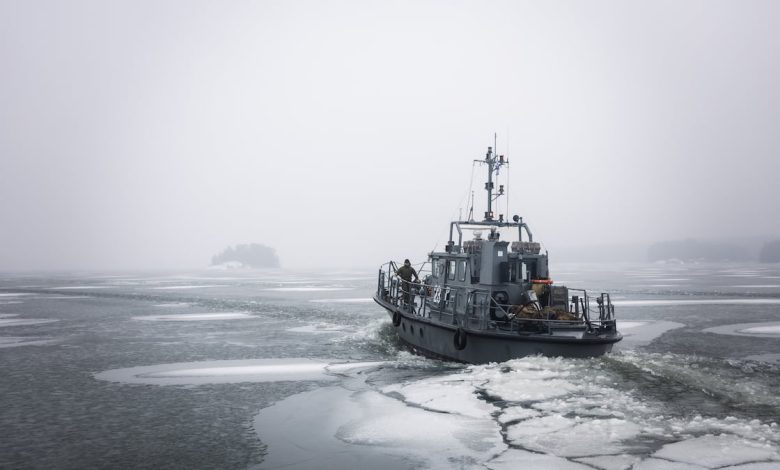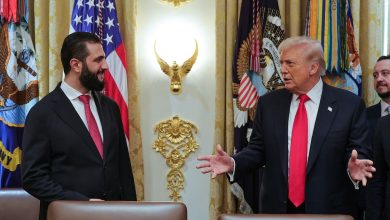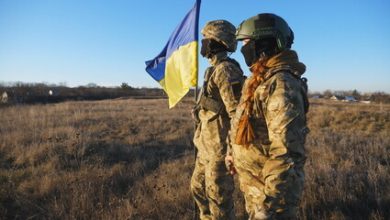NATO needs a new Harmel Report

Given Russian President Vladimir Putin’s aggression in not only continuing the war in Ukraine but also testing NATO’s air and sea space with drones, fighter jets and underwater vehicles, it is time for the alliance to react decisively.
Offering empty rhetoric and promises to spend more money on defense will not work short of one crucial factor. NATO needs to apply brain power in developing effective and affordable actions to counter Russia by affecting Putin’s mental processes and “outthink” him.
What is needed is a 21st-century version of the 1967 Harmel Report, headed by Pierre Harmel, Belgium’s foreign minister, that led the change from the alliance’s “massive retaliation” strategy to “flexible response.” Today, however, this report should focus on military options designed to change Putin’s behavior, eventually leading to military/diplomatic dialogue, a better understanding of each other’s concerns and, importantly, the resumption of arms control negotiations.
NATO’s centerpiece is Article 5, which states that an armed attack against one or more members shall be considered an attack against them all. But what constitutes an “armed attack” today? Is it cyber, disruption of underwater cables or overflights by armed fighters? What about “other measures” to affect domestic politics through influence operations or threats to use nuclear weapons? The answer is unclear, but it needs to be resolved and a consensus established, ideally on both sides.
What should NATO do?
In the Russian language, “maskirovka” means deception. NATO needs to plagiarize and use a reverse variant of maskirovka against the Russians in writing this report.
To do that, in addition to adapting a porcupine defense we have proposed elsewhere, NATO must be able to disrupt, mislead and shock Putin using influence operations to convince or coerce him to stop his “armed attacks” against NATO. This starts with analyzing possible NATO strategies that could threaten any Russian incursion by attacking the country’s vital military centers of gravity.
First, except for theater nuclear weapons — and NATO has three nuclear-armed members, the United States, United Kingdom and France — the alliance is far superior in every measure of power, especially military.
Despite fears of a Russian military attack against the West, the war in Ukraine has exposed the incompetence of many Russian generals and the evisceration of its army and navy. NATO must understand that Russia, while it is now learning lessons from its operations in Ukraine, is far weaker than many assume. These vulnerabilities can be exploited through NATO’s use of maskirovka.
Second, past promises for increased defense spending were never met. NATO’s Wales summit in 2014 committed members to applying 3% of GDP to defense. Similarly, this year’s summit set a goal of 5% of GDP, with 3.5% for defense and 1.5% for related infrastructure enhancements. Predicting the future is not easy, but, as in the past, virtually all members, including the U.S., will not reach that level. Better thinking and not more spending, regardless of whether the 5% of GDP goal is met, is needed.
Third, NATO must take the fight to Putin conceptually. Exploiting NATO’s geographic advantages is key. In the High North, Finland, with an 800-mile border with Russia, and its neighbor Sweden provide strategic leverage. Russia’s northern fleet in the Kola Peninsula in the north cape is as vulnerable as its Black Sea fleet is to Ukrainian standoff missiles, unmanned submarines and drones.
In the Baltic, the Russian enclave of Kaliningrad is physically separated from Russia. It is an obvious target, especially for influence operations which threaten Russia’s hold on the population. In the Black Sea, with Turkey’s huge army and Romania and Bulgaria, any Russian attack could be offset by NATO’s ability to threaten Russian forces in Ukraine.
To give this new Harmel Report teeth, tabletop and command post exercises that war-game these options will be used. Russia will no doubt monitor them. Finally, any Russian overflights or incursions into home waters that break agreed conventions must be met by force and shot down or sunk.
Clearly, this review will provoke strong reactions, both positive and negative, within NATO members and from Russia, thereby raising the threat of escalation. But the reality is that Russia is already using quasi “armed attacks” against NATO and NATO must react. The knowledge that two can play this game will make Russia pause and bring relations back into better balance, allowing for a more stable relationship.
NATO must take these initiatives to halt Putin’s use of “other measures” to attack and disrupt the alliance by affecting and influencing his strategic calculations. And, under U.S. President Donald Trump, America’s commitment to NATO is not assured. The alliance can neutralize this unhappy prospect by confronting Russia now.
While we did not believe Putin would make the strategic blunder of invading Ukraine a second time, given the weaknesses Russia faces and will continue to face, NATO can achieve its deterrence goals by counterintuitively becoming more aggressive, taking the offensive using brains, innovation and maskirovka to derail Putin’s calculations. But will it? And will NATO begin thinking about what a post-war Russia looks like to forestall another 1917 or 1991 and collapse?
Field Marshal David the Lord Richards is a former U.K. chief of defense. Dr. Harlan Ullman is senior adviser at Washington’s Atlantic Council. Both are co-authoring “Who Thinks Best Wins: Preventing Strategic Catastrophe” due out in spring 2026.







